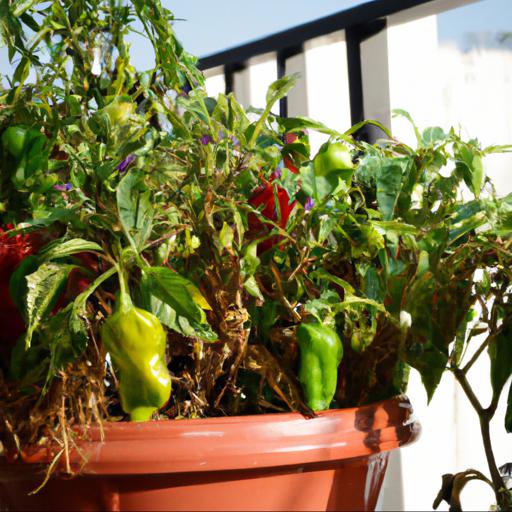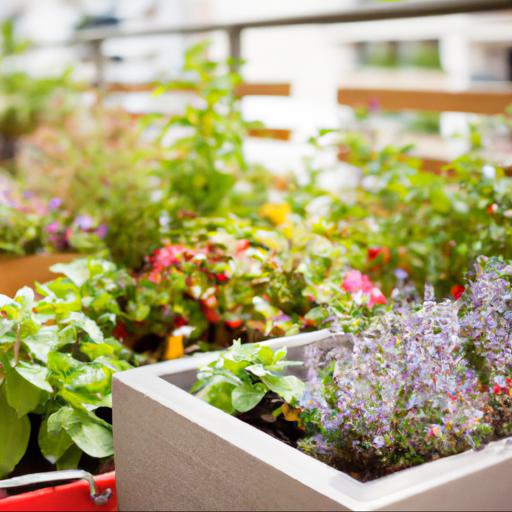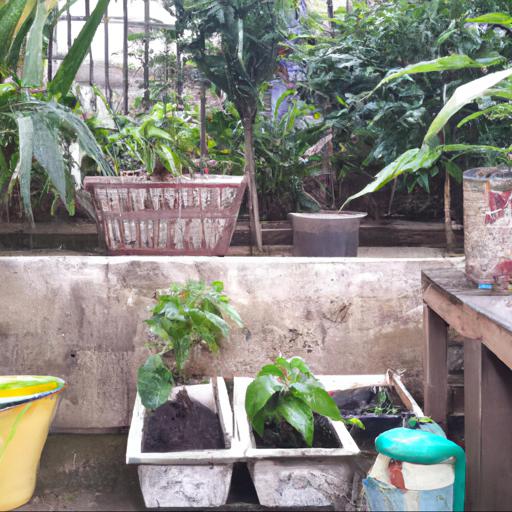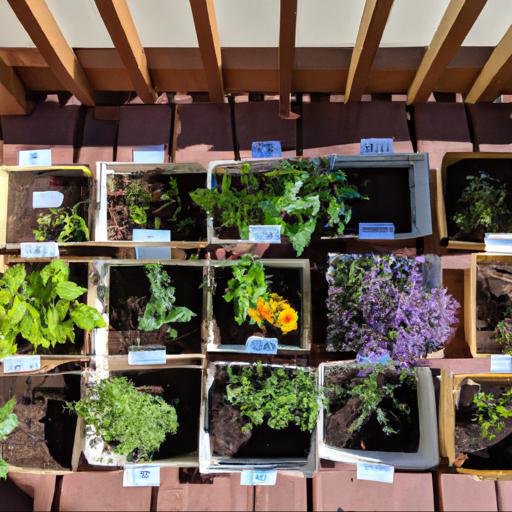Are you looking for plants to create a beautiful urban garden? Look no further!
We have compiled a list of 12 perfect plants for your urban garden. From low-maintenance succulents to vibrant flowering plants, these 12 plants are sure to make your urban garden thrive. We’ll walk you through the best plants to choose, how to care for them, and where to buy them.
Get ready to turn your city balcony, rooftop, or backyard into a lush oasis!
Benefits of urban gardening

As an expert UK gardener, I can sympathize with the difficulty in finding a place to garden in an urban environment. It is often difficult to find the time and energy to create a full-fledged garden in a metropolis, let alone finding the appropriate resources and space necessary. Luckily, urban gardens can be quite successful with just a few key plants and some smart planning.
Here are twelve ideal plants for an urban garden that will result in a beautiful and thriving urban oasis. First, consider adding a few tough shrubs, such as boxwood, holly and yew will give your garden structure and provide a full foliage without taking up a lot of space.
Evergreen groundcovers like ivy, pachysandra, or vinca can also provide good coverage with minimal effort. When you’re looking for some color in your urban landscape, consider adding some annuals like petunias, impatiens, snapdragons, or cosmos to bring vibrant hues to your garden. Or, if you’d prefer some unique evergreen interest, ornamental grasses, like ribbon grass, Japanese forest grass, or Maiden grass, provide a soft and graceful look.
Finally, for a little exotic flair, try introducing some tropical foliage like banana trees, elephant ear, and caladiums. These tropical plants can give your urban garden a unique look and can also be brought indoors and placed in a sunny window to provide additional greenery in your home.
Overall, building an urban garden can provide many benefits, such as providing space for relaxation, a refuge from the hustle and bustle of city life, and a bounty of fresh fruits, vegetables, and herbs. By carefully selecting the right plants, it’s possible to turn any urban space into a tranquil and productive urban oasis.
12 plants perfect for an urban garden

When it comes to creating a small, urban garden, you need to select your plants carefully. Every inch of space matters and selecting plants that are well-suited for the environment and conditions of your city balcony, terrace or rooftop is vital to ensure a successful garden. To help you out, here are 12 of the top plants perfect for creating an urban garden.
Succulents, such as the elegant and low-maintenance Echeveria, are a great option for urban gardens. Requiring little water and often capable of thriving in low light and limited amounts of soil, succulents are a staple of small balconies and porch gardens.
The hardy Aloe vera is another great or terrace garden addition; providing both beauty and practical benefits. Aloe vera has a stunning rosette shape, low-water requirements and is also incredibly useful as a topical treatment when applied to burns and other skin irritations. For sunny spots on your balcony or terrace, consider colour and height.
Bright, cheerful Marigolds can be arranged in rows or clusters to add a vibrant splash of colour to any urban space and their drought-tolerant nature make them a great choice for city gardeners. Tall and slender hibiscus’ can also provide a vertical boost and their lushly tropical blooms will add a real tropical-vacation feel to your balcony.
Herbs are also a great addition to any urban garden. The hardy oregano is a great choice given its low-water requirements and fragrant aroma – great for flavouring pizzas and pastas fresh from your own balcony.
Add a bit of quirky character to your garden with the Iresine and Purple Queen plants. These quick-growing purplish-green stunners can climb and spread over terraces or up walls, creating a dramatic and unexpected display. A bougainvillea is also a great urban garden selection and its airy, fuchsia, orange or pink blooms can create quite an impact in any city garden.
Likewise, the hardy little jasmine, with its subtle, white, star-shaped blooms, offers a more muted display to be enjoyed from afar. Finally, carnivorous plants, such as the tall, red-tinged Sundew, are great occupants for terraces or balconies with limited amounts of soil and a penchant for the dramatic. There are plenty of plants capable of surviving and thriving in an urban environment. With a bit of research and experience, you can select a variety of plant types to create an attractive and welcoming urban garden that works with the conditions of your space as well as your own personal style.
Tips for planting and caring for urban garden plants

Urban gardening is becoming an increasingly popular way to enjoy the pleasures of a green space while taking advantage of a limited garden area. There is an array of plants that can be cultivated in small spaces which provide a wide range of textures, colors and scents. Here are some of the top plants to consider incorporating into an urban garden.
When planning an urban garden, it’s important to start with a few classic, low maintenance flowering plants. Petunias, impatiens, and begonias bring a burst of bright color and bloom for the entire summer season.
These are also quite easy to care for, requiring little more than regular watering and the occasional trimming to keep them neat and tidy. Another great plant for urban gardeners is dwarf shrub roses. Bushes can be pruned to fit the space, and are relatively disease-resistant, which makes them ideal for those who don’t have the time or energy to spend a lot of time tending their garden.
Clematis, hydrangeas, and lavendar are also good easy- to- care- for shrubs that are great for an urban garden. Herbs are also excellent for urban gardens as they can be grown in small containers, and can be picked as needed for cooking without taking up too much space.
Basil, oregano, rosemary, thyme, and sage are all relatively hardy plants that require minimal attention. Depending on space, it’s possible to create a stunning herb display that adds a mix of colors and aromas to the garden. Last but not least, vines are a fantastic addition for those in urban settings.
Honeysuckle is a beautiful and fragrant vine, and ivy or morning glory can add a little bit of privacy to a wall or fence. Additionally, many of the popular climbing plants come in drought-resistant varieties that can take the heat of the summer sun and still thrive.
For a small urban garden full of color, texture, and fragrance, these twelve plants are an excellent place to start. With just a few of these classics, gardeners can create a stunning oasis in a limited space.
Our video recommendation
Conclusion
This article discussed 12 plants that are ideal for urban gardens. These plants are low maintenance, require little space, and are easy to grow. They include edible herbs, vegetables, and flowers.
Each one is chosen for its ability to thrive in urban environments and provide beauty, nutrition, and enjoyment. With these plants, urban gardeners can create a vibrant and productive garden in even the smallest spaces.
FAQ
What are the best plants for an urban garden?
Some of the best plants for an urban garden are herbs, vegetables, succulents, and houseplants.
What are the benefits of having an urban garden?
The benefits of having an urban garden include providing fresh, healthy food, reducing food costs, improving air quality, reducing noise pollution, providing a space for relaxation and recreation, and creating a sense of community.
What are the challenges of gardening in an urban environment?
The challenges of gardening in an urban environment include limited space, lack of access to sunlight, soil contamination, and limited access to water. Additionally, urban gardening can be more expensive than rural gardening due to the cost of materials and supplies.
What are the best practices for maintaining an urban garden?
The best practices for maintaining an urban garden include: choosing the right plants for the climate and soil type; providing adequate sunlight and water; using organic fertilizers and compost; controlling pests and weeds; and regularly pruning and trimming plants.
What are the most common mistakes made when creating an urban garden?
The most common mistakes made when creating an urban garden are not accounting for the amount of sunlight the garden will receive, not planning for adequate drainage, not using the right soil, not providing enough water, and not using the right plants for the climate.
What are the best ways to maximize space in an urban garden?
The best ways to maximize space in an urban garden are to use vertical gardening, container gardening, and raised bed gardening. Additionally, using companion planting, utilizing trellises, and planting in layers can help to maximize the space in an urban garden.

